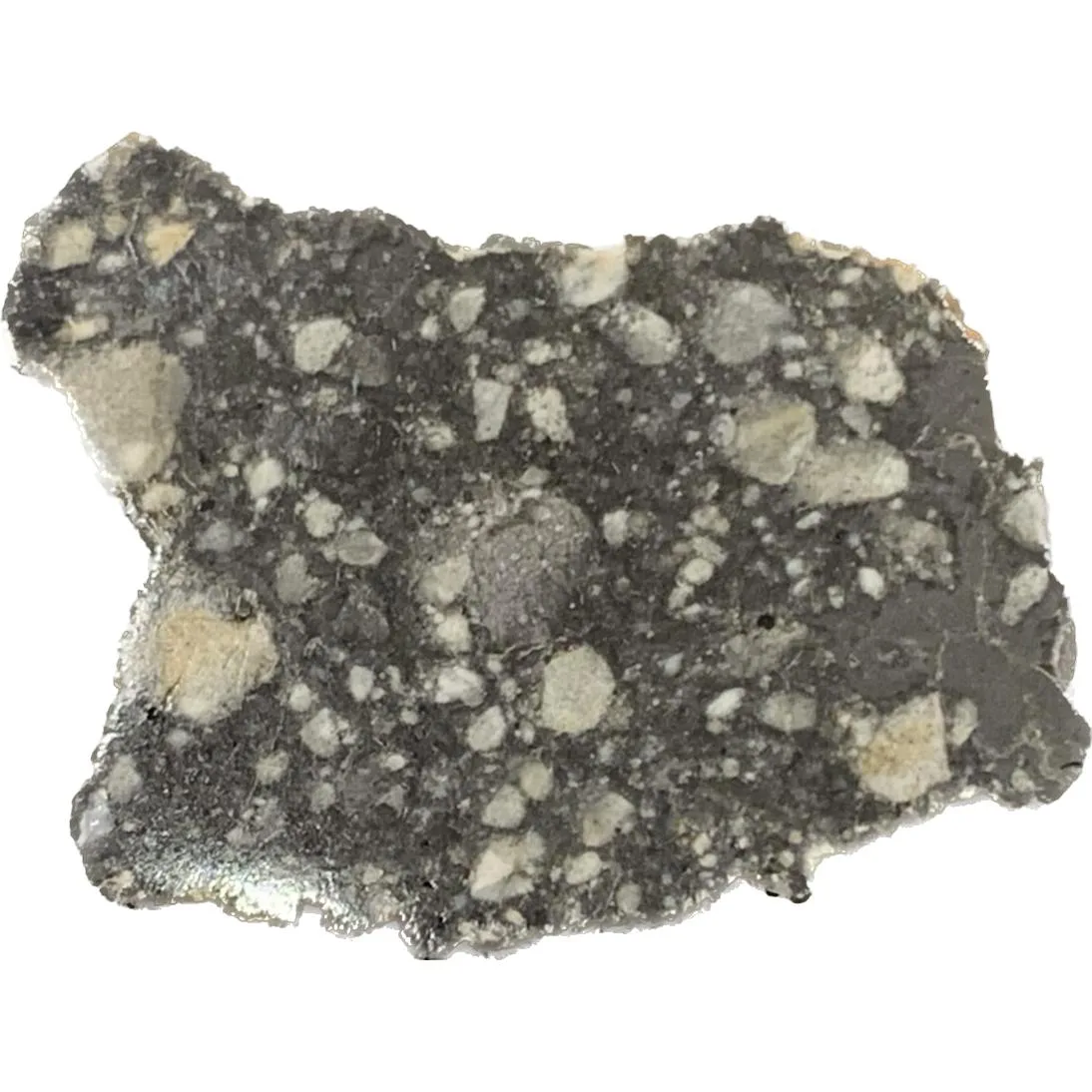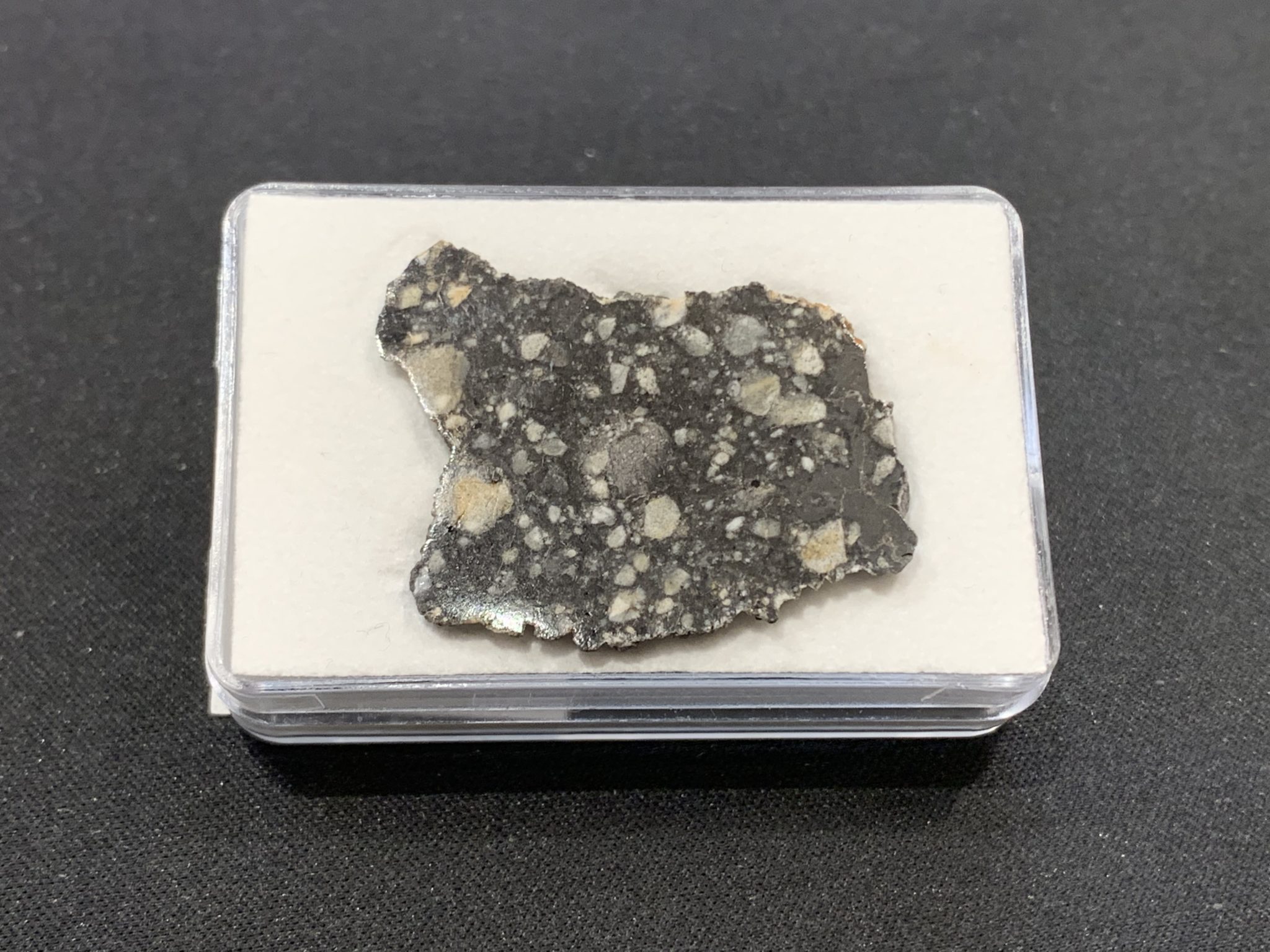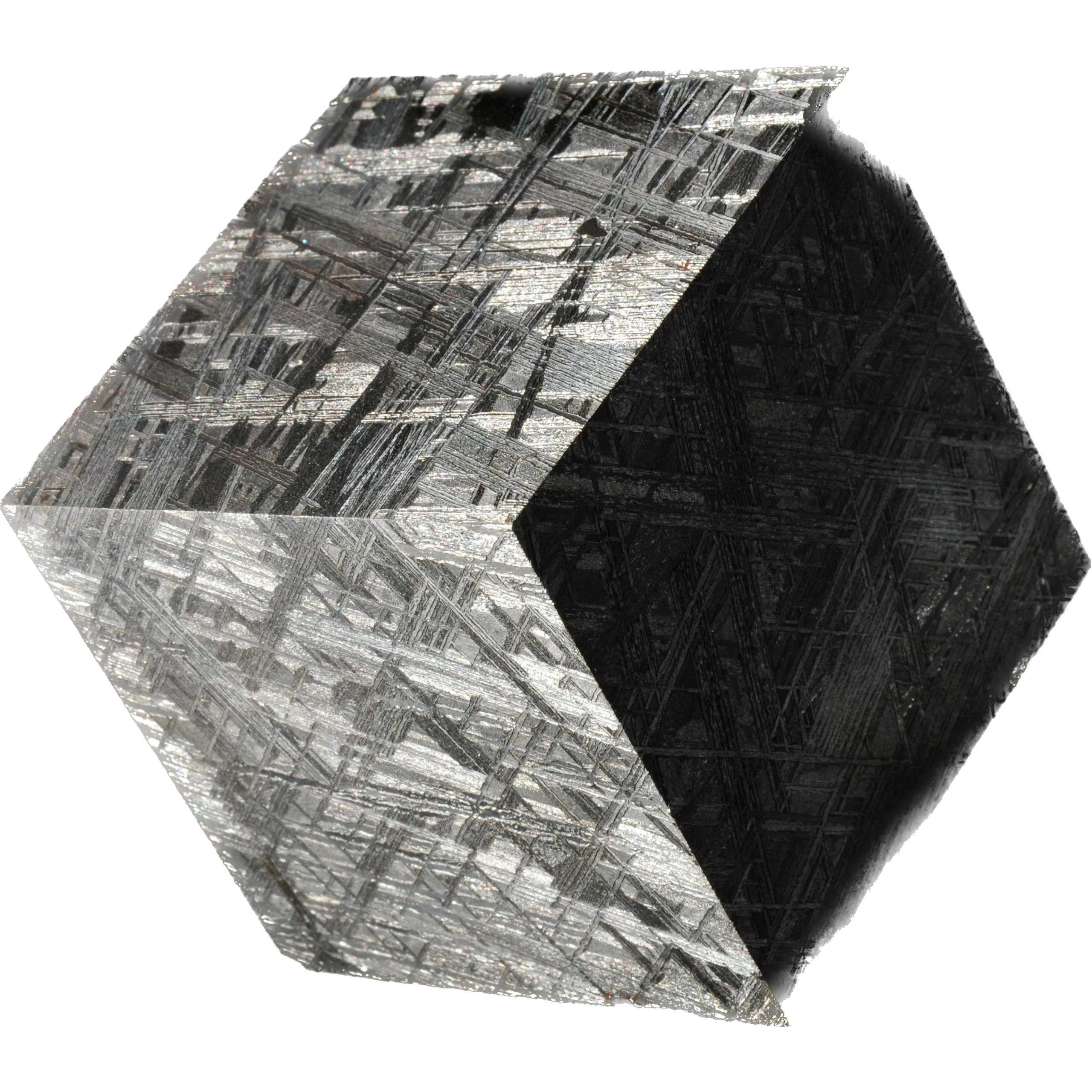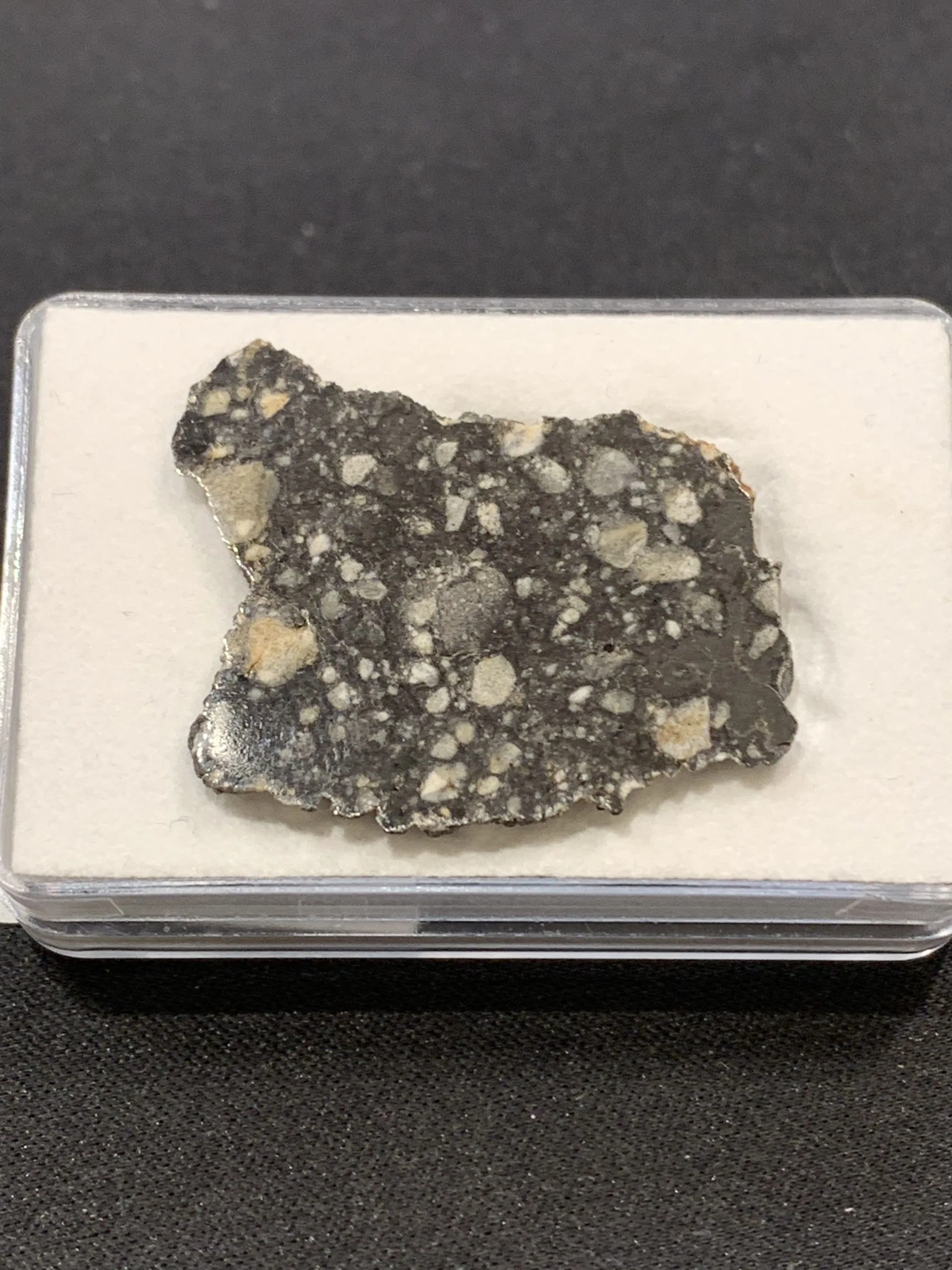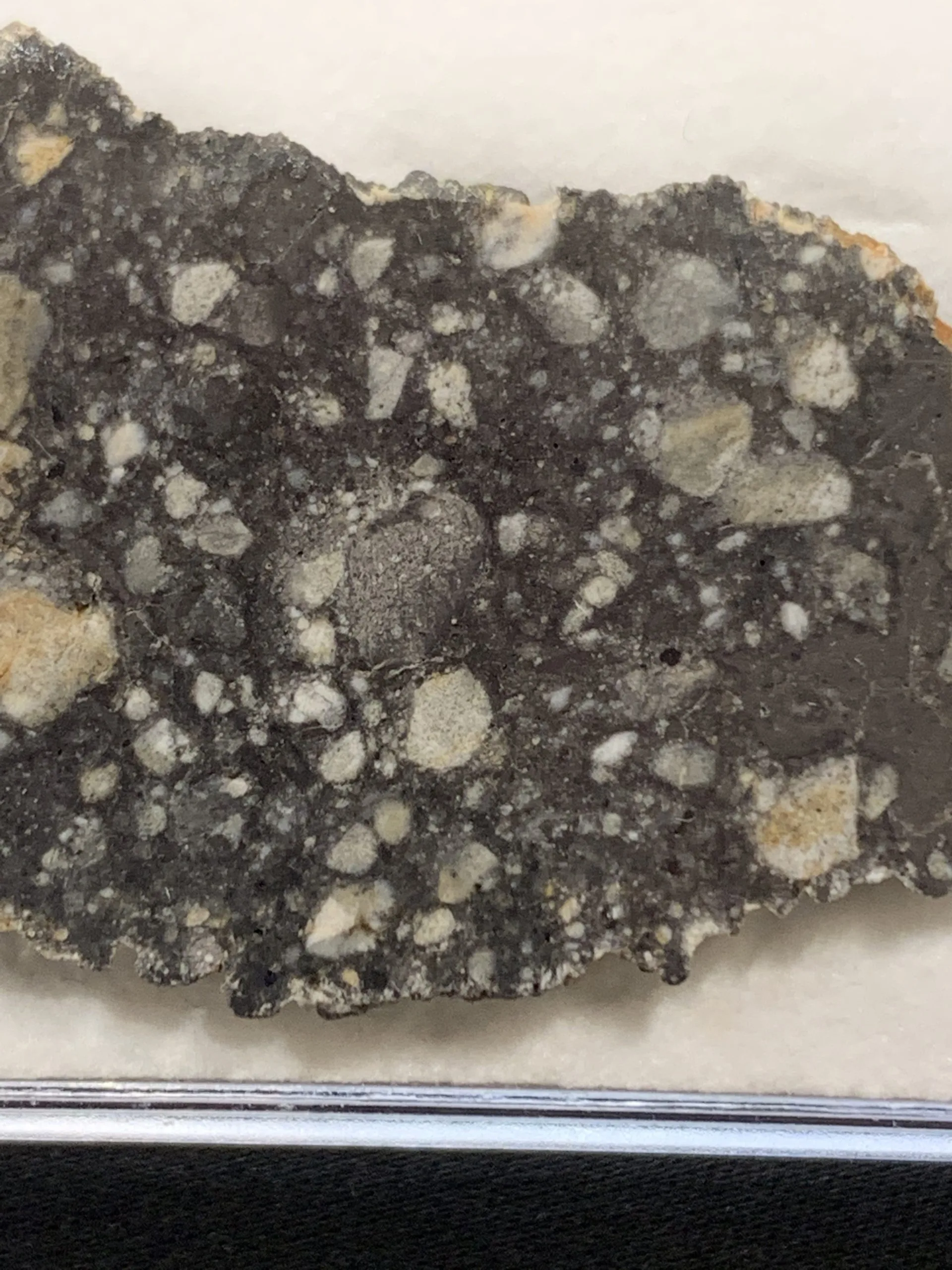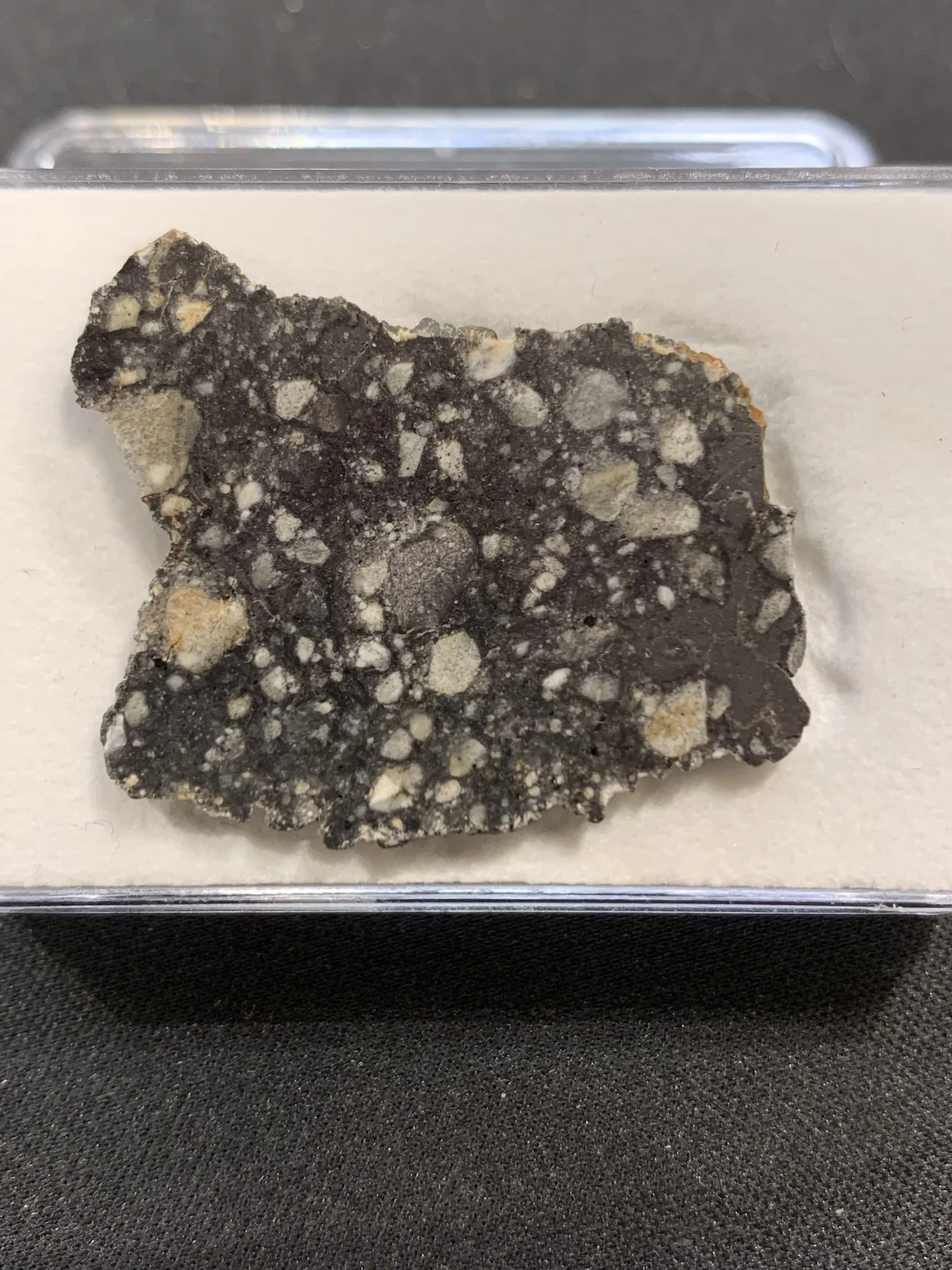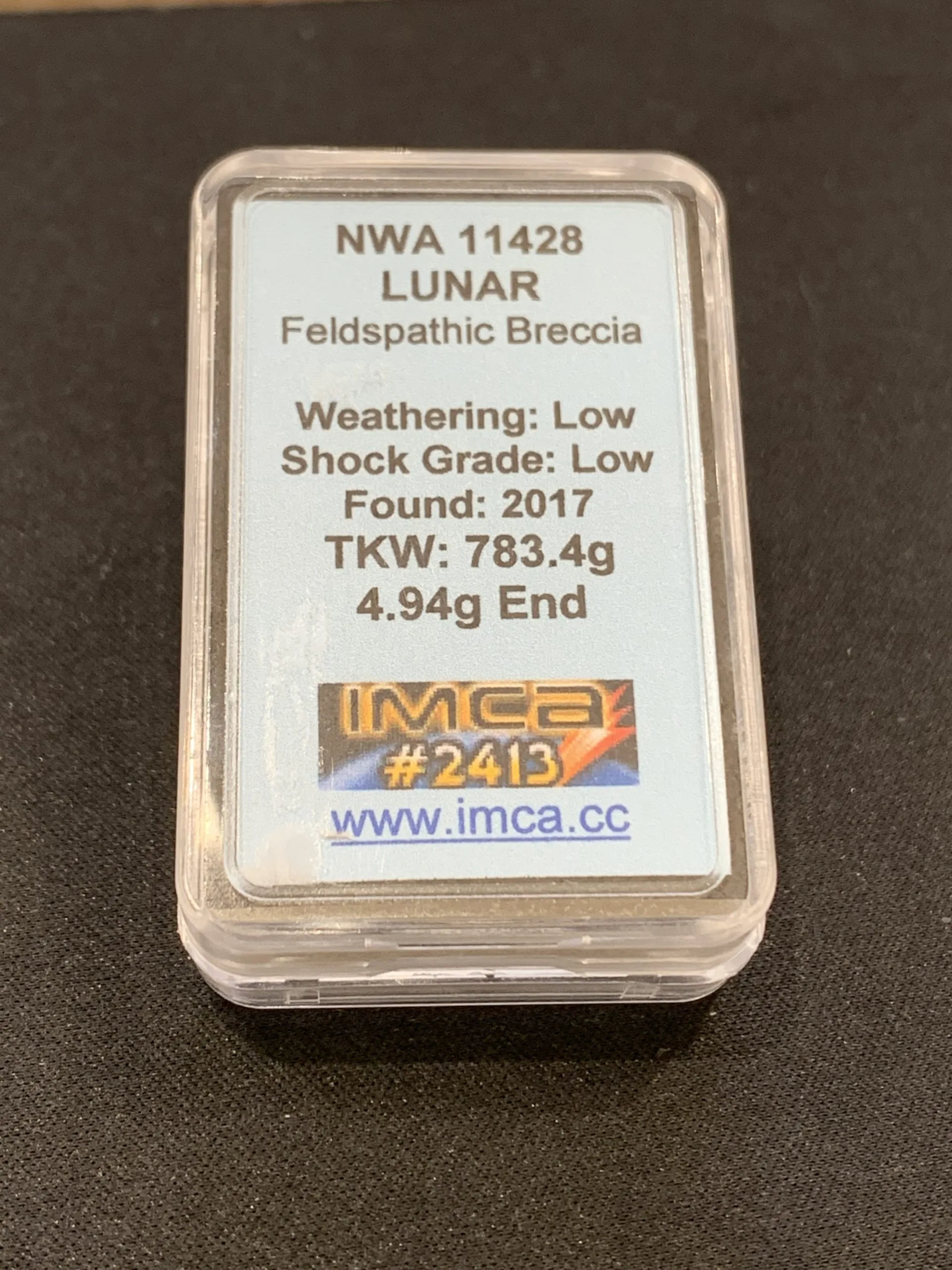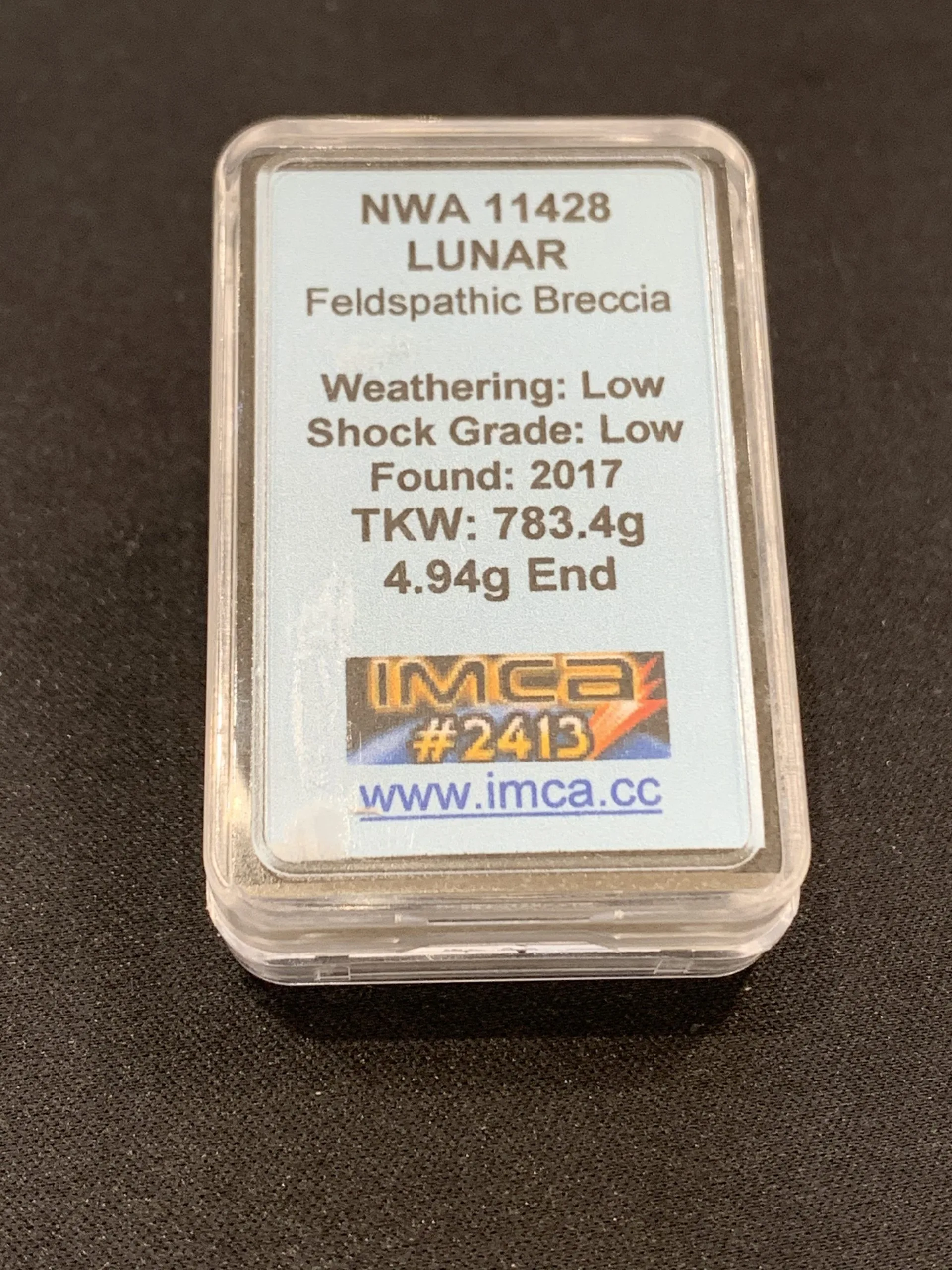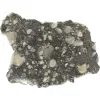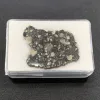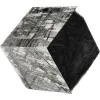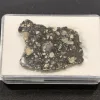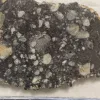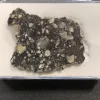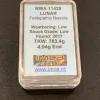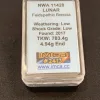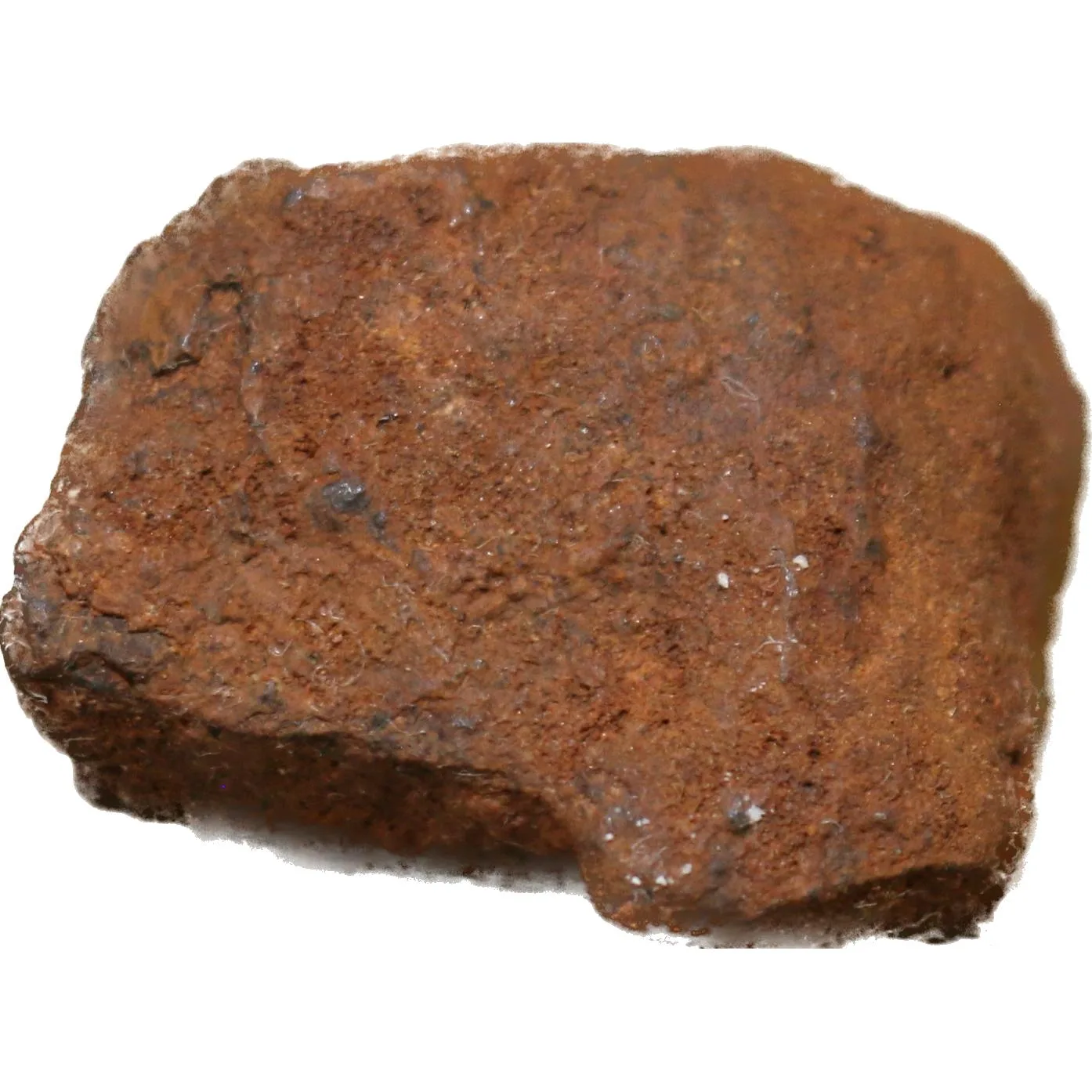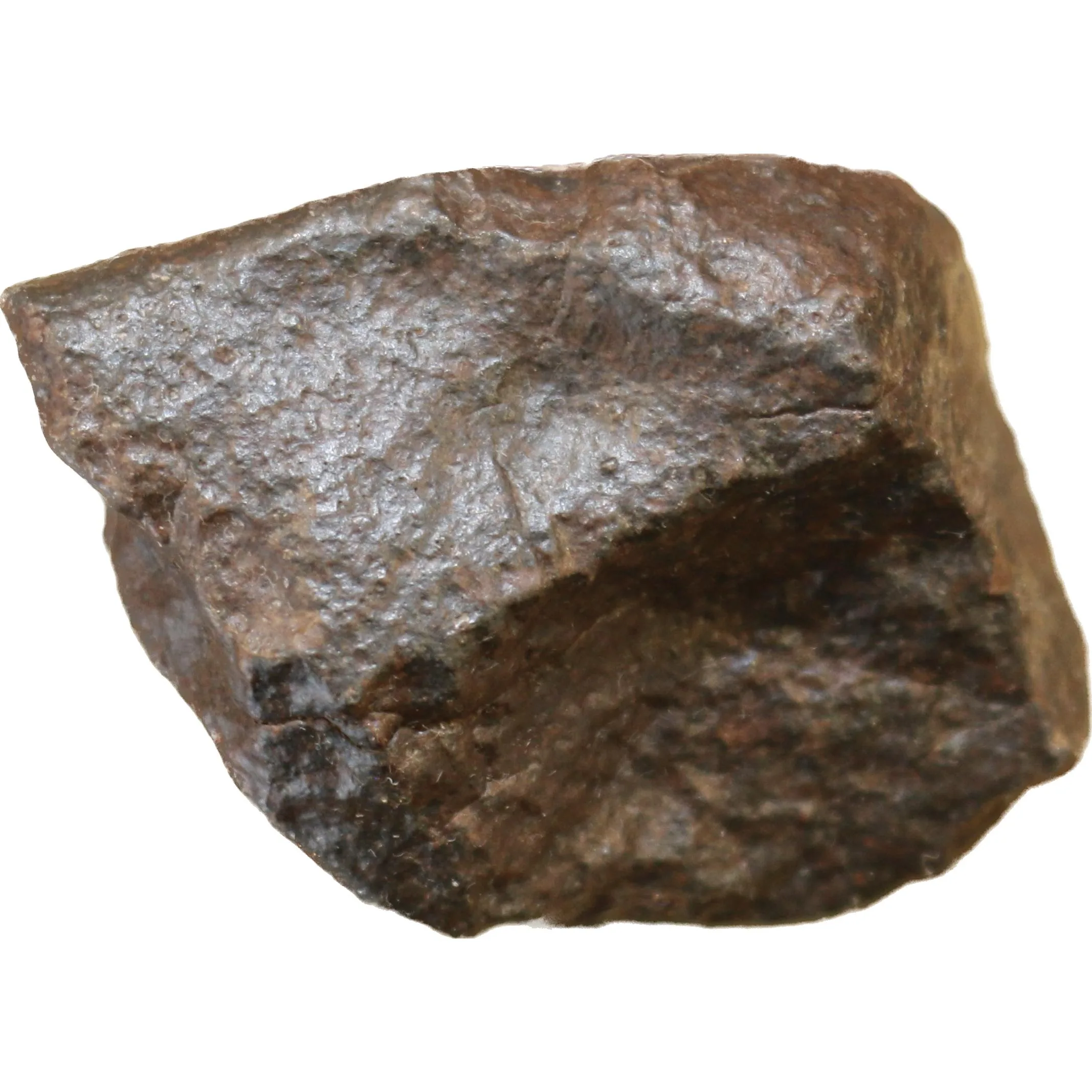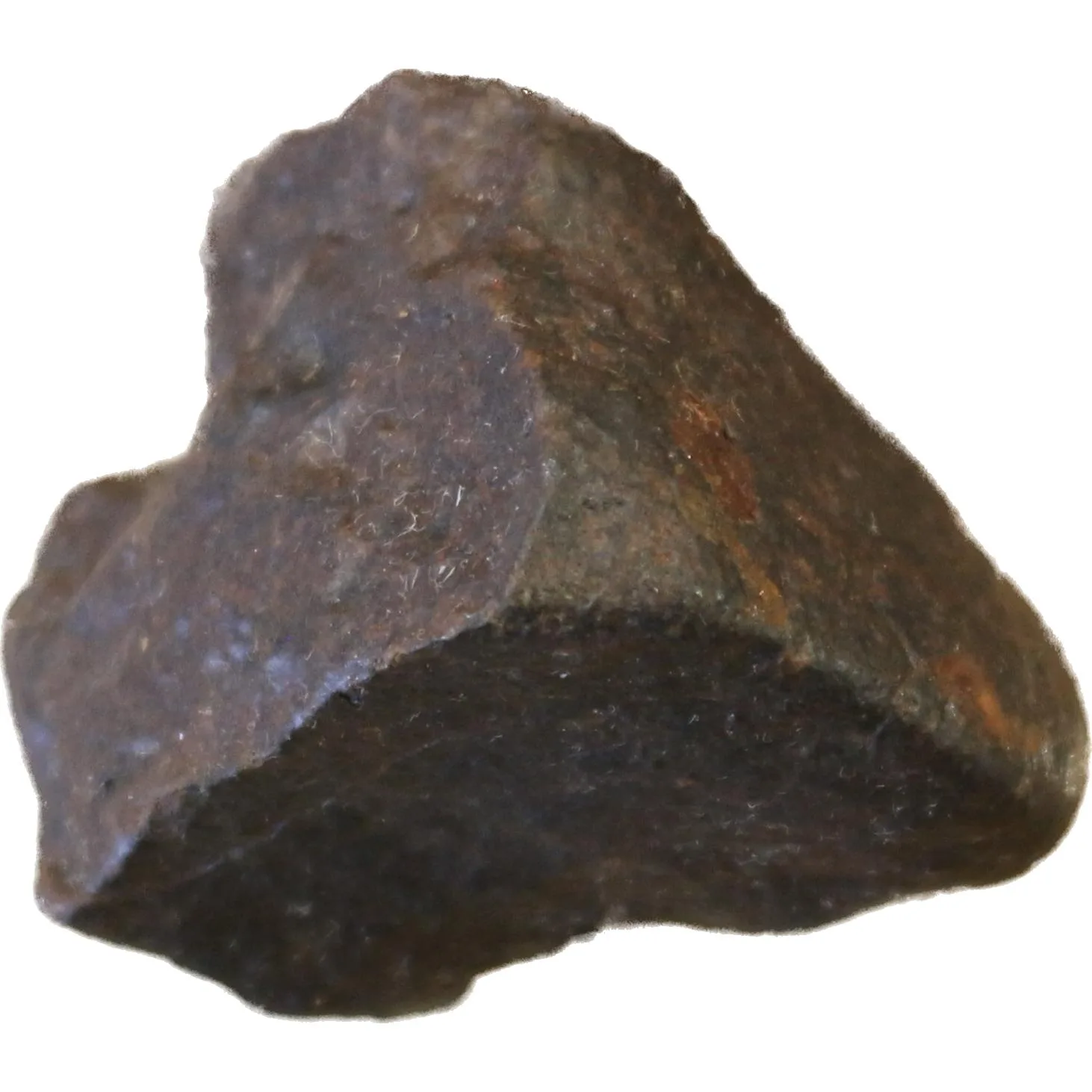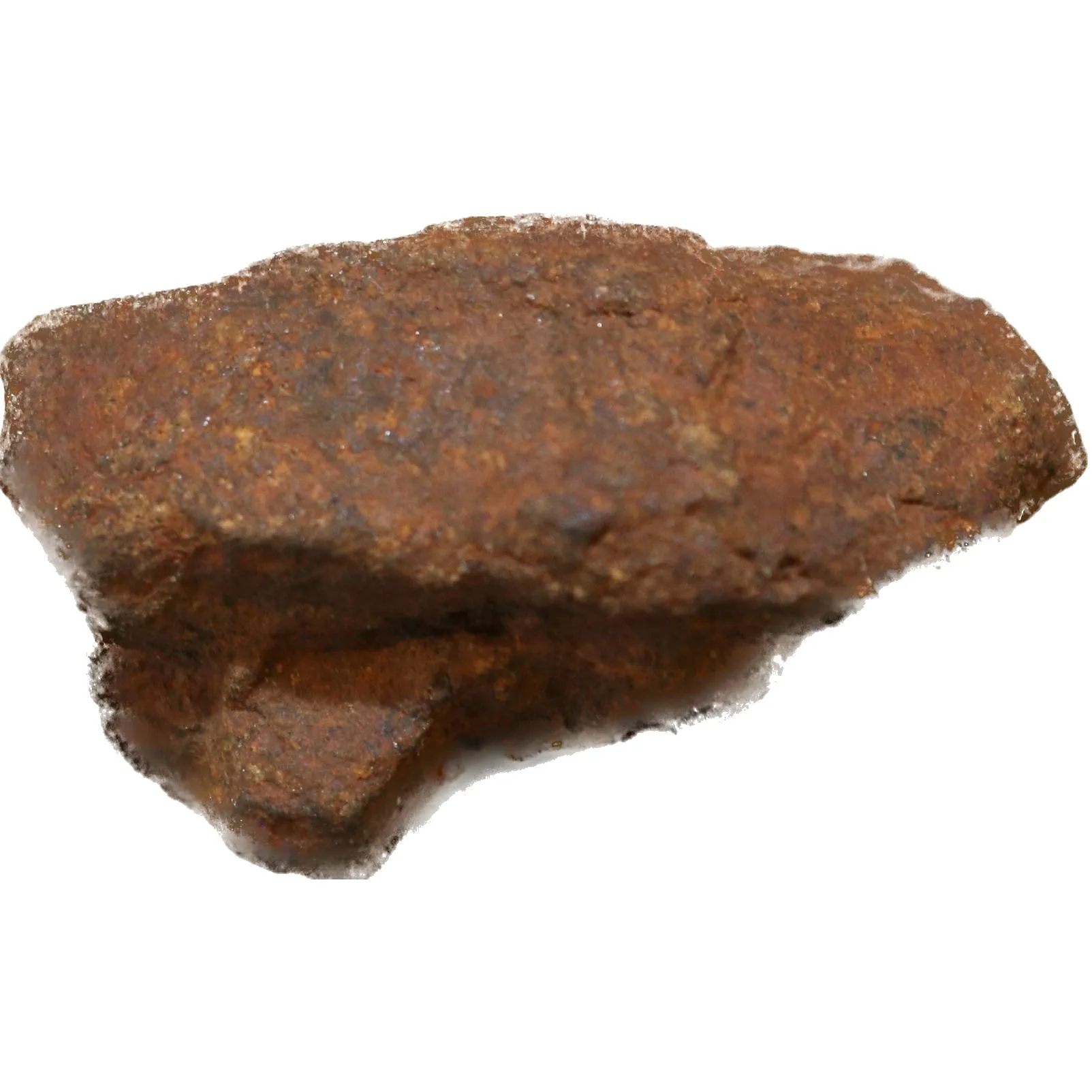This amazing and rare Lunar Meteorite is an end cut. Professionally cut and polished on one side and natural on the other. The meteorite is a moon rock and is certified and registered with the IMCA.
Stony Meteorites, which are the most abundant kind of meteorite, are divided into two groups: chondrites and achondrites. Chondrites are physically and chemically the most primitive meteorites in the solar system.
About 86% of the meteorites are chondrites, which are named for the small, round particles they contain. These particles, or chondrules, are composed mostly of silicate minerals that appear to have been melted while they were free-floating objects in space. Certain types of chondrites also contain small amounts of organic matter, including amino acids, and presolar grains. Chondrites are typically about 4.55 billion years old and are thought to represent material from the asteroid belt that never coalesced into large bodies. Like comets, chondritic asteroids are some of the oldest and most primitive materials in the solar system. Chondrites are often considered to be “the building blocks of the planets”.
About 8% of the meteorites are achondrites (meaning they do not contain chondrules), some of which are similar to terrestrial igneous rocks. Most achondrites are also ancient rocks, and are thought to represent crustal material of differentiated planetesimals. One large family of achondrites (the HED meteorites) may have originated on the parent body of the Vesta Family, although this claim is disputed. Others derive from unidentified asteroids. Two small groups of achondrites are special, as they are younger and do not appear to come from the asteroid belt. One of these groups comes from the Moon, and includes rocks similar to those brought back to Earth by Apollo and Luna programs. The other group is almost certainly from Mars and constitutes the only materials from other planets ever recovered by humans.

